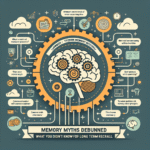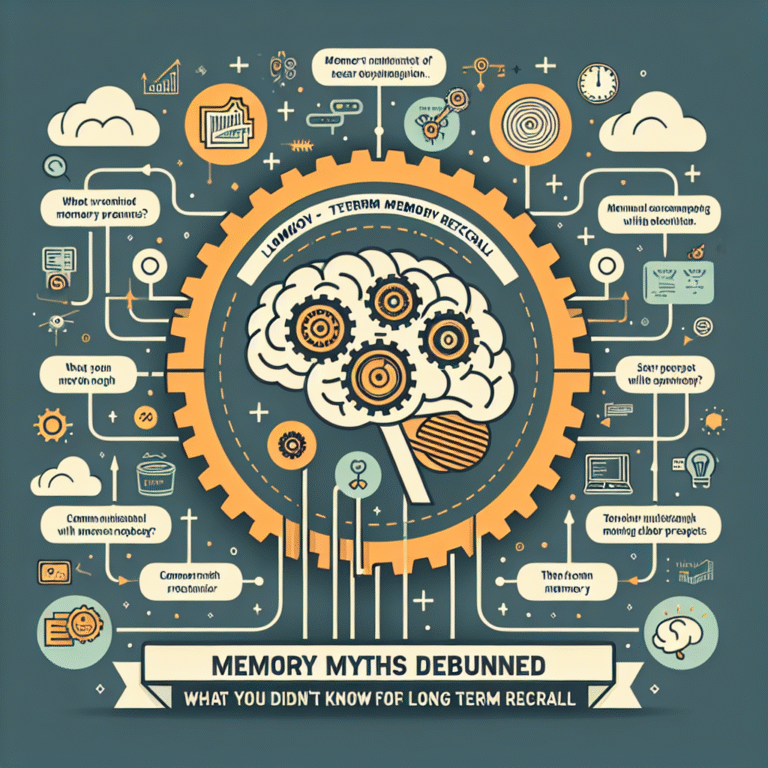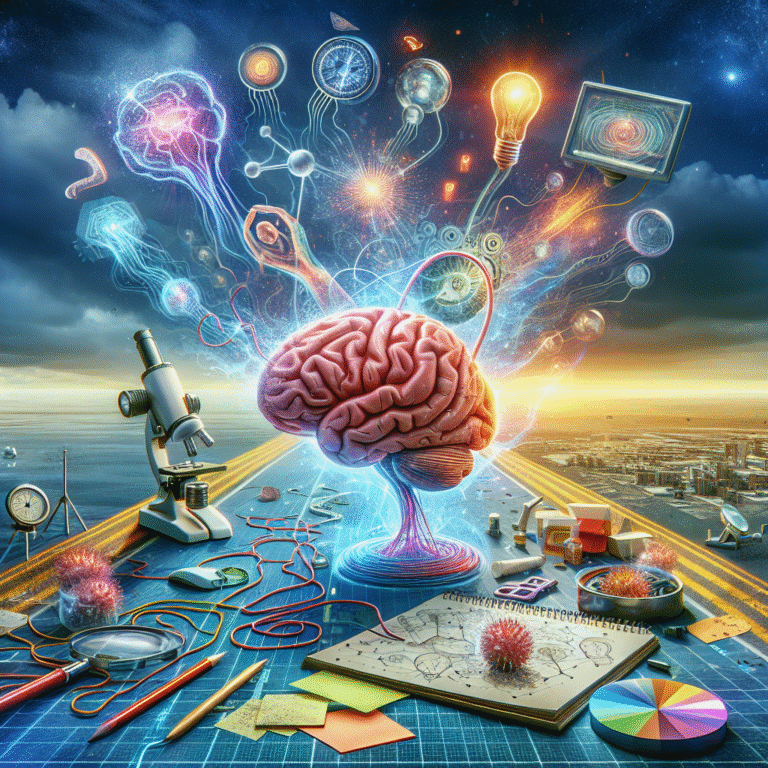
Introduction
Imagine a child picking up a new language without formal lessons, or an adult mastering a complex skill through trial and error rather than structured practice. These scenarios tap into the profound and often unnoticed world of implicit learning. This fascinating cognitive process underpins much of human behavior, influencing how we absorb information and acquire skills without explicit awareness. The hidden mechanisms of implicit learning in children and adults shape our interactions, guide our decisions, and even foster creativity in ways we’re only beginning to understand.
In this comprehensive exploration, we will dive deep into the intricacies of implicit learning, unveil its mechanisms, and illustrate its applications through compelling case studies. Whether you’re a parent, educator, or lifelong learner, understanding these hidden processes can enrich your approach to teaching, learning, and personal development.
What Is Implicit Learning?
Implicit learning refers to the unconscious acquisition of knowledge that occurs without explicit intention—in contrast to explicit learning, where the learner is aware of what they are trying to learn. This type of learning often involves the picking up of rules, patterns, and associations without the learner actively trying to do so.
Key Characteristics of Implicit Learning
- Unconscious Process: Learners are often unaware they are learning.
- Contextual Learning: It occurs in naturalistic settings, embedded in everyday experiences.
- Robust: The learned skills can be retained long-term and often endure despite a lack of practice.
- Transferable: Implicit knowledge can generalize across different tasks.
The Role of Implicit Learning in Development
Implicit learning plays a crucial role in cognitive and emotional development. Children, in particular, are adept at this form of learning as they absorb their surroundings. For instance, a toddler learns language by mimicking sounds and phrases within their environment long before they understand grammar or sentence structure.
The Science Behind Implicit Learning
Neurobiological Mechanisms
Research in neuroscience has mapped several brain areas associated with implicit learning, particularly the basal ganglia and the neocortex. These structures facilitate the learning of patterns, habits, and skills. Studies show that individuals with damage to these areas often struggle with tasks dependent on implicit learning, underscoring their importance.
Cognitive Psychology Perspectives
Cognitive psychology offers various theories regarding how implicit learning works. The most prominent include:
- Statistical Learning Theory: Suggests that learners acquire knowledge by detecting patterns and regularities in their environment.
- Connectionist Models: Highlight that learning occurs through networked neural connections that strengthen with repeated exposure.
Case Study: Statistical Learning in Infants
A fascinating study involving infants demonstrated the power of statistical learning. Researchers exposed babies to a stream of artificial language syllables. Even without explicit teaching, the infants were able to identify word boundaries, suggesting that they were unconsciously recognizing patterns based on frequency and co-occurrence. This study’s implications extend beyond language acquisition—it reflects how children absorb complex systems, forming the foundation for later cognitive abilities.
| Age Group | Learning Task | Outcome |
|---|---|---|
| Infants | Language exposure | Recognition of word boundaries |
| Toddlers | Social interactions | Understanding of normative behavior |
| Adults | Skill acquisition | Mastery of intricate tasks |
Implicit Learning in Children
Early Developmental Stages
From the moment children enter the world, they engage in implicit learning. Infants learn through observation and imitation. Toddlers refine their skills through interactions with peers, unconsciously absorbing social norms and emotional cues.
Case Study: Unstructured Play
Research has shown that unstructured play significantly boosts children’s implicit learning capabilities. A case study conducted in a kindergarten showed that children engaging in free play demonstrated greater creativity and problem-solving skills than those in structured learning environments. This indicates that allowing children the freedom to explore promotes implicit learning, which contributes to their cognitive and emotional growth.
Implicit Learning Strategies for Parents and Educators
- Encouraging Exploration: Provide children with opportunities to play, explore, and interact with diverse materials.
- Modeling Behavior: Demonstrate desired behaviors rather than explicitly instructing.
- Creating a Rich Environment: Foster an environment filled with varied learning opportunities that promote exploration and discovery.
Implicit Learning in Adults
The Lifelong Learning Journey
As adults, the mechanisms of implicit learning continue to operate, albeit often in more refined forms. Adults engage in implicit learning through exposure to new experiences, work-related tasks, and social interactions.
Case Study: Workplace Learning
A study on workplace training found that employees often learn new skills more effectively through experiential learning than traditional training sessions. For instance, employees involved in project-based learning reported higher retention rates and a deeper understanding of their roles. This highlights the effectiveness of implicit learning in professional development.
Strategies for Adults to Enhance Implicit Learning
- Engagement in New Activities: Adults should engage in new experiences that challenge their existing skills and assumptions.
- Networking: Building relationships with diverse groups facilitates the absorption of new social norms and skills.
- Mindful Reflection: Taking time to reflect on experiences can help crystallize implicit learning processes.
Challenges and Misconceptions
Common Misunderstandings About Implicit Learning
- It’s Just for Kids: While children are adept at implicit learning, adults also benefit from it throughout their lives.
- Conscious Effort is Unnecessary: Although it is an unconscious process, creating the right environment and conditions for implicit learning is crucial.
- Implicit vs. Explicit Learning: Though different, implicit and explicit learning are complementary processes; effective learning often involves a blend of both.
Addressing Challenges in Implicit Learning
Multiple factors can inhibit implicit learning, including anxiety and a lack of rich experiences. Facilitating a positive learning environment, encouraging exploration, and reducing stress can significantly enhance implicit learning potentials.
Conclusion
The hidden mechanisms of implicit learning in children and adults are integral to our cognitive and emotional architectures. By understanding these processes and implementing practical strategies tailored for different age groups, we can unlock potential not just in ourselves but also in those we guide. Whether through unstructured play for children or experiential learning for adults, fostering environments rich in opportunities allows us to harness the power of implicit learning to its fullest. This journey toward understanding learning’s hidden depths is not just academic; it can inspire transformative change in our approaches to education, skill acquisition, and personal growth.
FAQs
1. What is the difference between implicit and explicit learning?
Implicit learning occurs without conscious awareness, while explicit learning involves intentional efforts to acquire knowledge or skills.
2. Can implicit learning be improved?
Yes, creating engaging and rich learning environments can enhance implicit learning opportunities for both children and adults.
3. How does play facilitate implicit learning in children?
Play allows children to explore and experiment in a low-pressure environment, leading to natural acquisition of skills and social norms.
4. Are there tools or methods for adults to facilitate implicit learning?
Engaging in diverse experiences, networking, and practicing mindfulness can help adults enhance their implicit learning capabilities.
5. Can implicit learning occur in formal education settings?
Absolutely; however, incorporating elements of exploration and real-world application can augment traditional educational approaches to leverage implicit learning.
By leveraging the hidden mechanisms of implicit learning in everyday life, we can foster deeper understanding, creativity, and resilience—essential skills in our constantly evolving world.
















